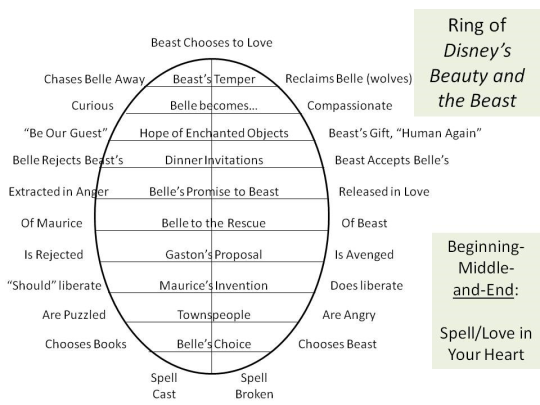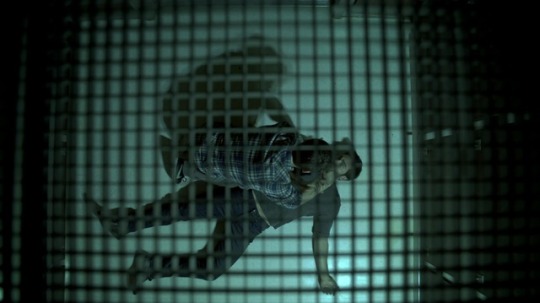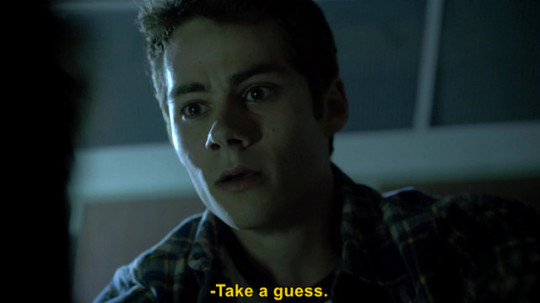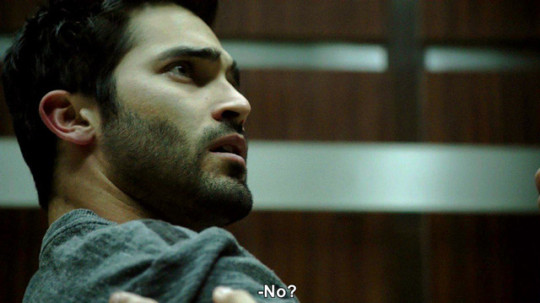this is my writing scribble blog and yep
Last active 2 hours ago
Don't wanna be here? Send us removal request.
Text
happy birthday hope u make it
Do you ever eat popcorn out of the palm of your own hand with such ardent desperation that you feel like both a wild horse and the gentle schoolgirl feeding it treats to gain its affection
1M notes
·
View notes
Text
Once in a while it’s really interesting to slide toward fanfic in a random different fandom and see what the most popular works/tropes are over there
For instance the differences between ‘hockey rpf’ and ‘check please’ tropes and stories are so massive — like hockey rpf has mostly tended toward most popular works being about yearning for forbidden love or finding out you share a secret with your bud or realizing just how good of buds you are or doing/being something-in-defiance-of-norms or even just idiot-does-all-the-above ... whereas the most popular check please fics I’ve felt have leaned more toward ...repurcussions of the above? Or succeeding in spite of or while doing or at the above? With really heavy doses of overlap with disability issues or mental health concerns, too.
And I just wonder is this a founder effect? Is this a ...symptom isn’t the right word... of the social media where each became popular? ((So far as I can tell, hockey rpf was almost self-quarantined back in the live journal and kink meme days of its most active points; it’s also the sort of thing that would spread amongst people with similar Tastes, not similar Interests (IMO) ..-/ check please started on tumblr and left once it gained enough popularity to be viable elsewhere - a venue where people are united mainly by having common Interests, regardless of taste, and by YELLING about how those could and should intersect
Hockey rpf I think has its roots in something like celebrity culture - parasocial relationships and whatnot ; check please canon is its canon, but I think it’s interesting on a personal level that I only like the fics where interpretations of main character are close to canon but minor side characters have been set free to roam and characterized wildly - the Kent Parsons and Chowders as explorations of relationship dynamics not seen in the comic.
I also tend to feel like fics that actually show the main comic couple tend to absolutely destroy one of their dreams - here is Jack, but he is AFAB trans and a double amputee and his backstory is still the same except for the horrific trauma of the two above changes intersecting to destroy all of his dreams ... but he’s exactly the same otherwise , so what made him different absolutely ruined his life but changed nothing about him as a person .. it’s this horrific intersection of burying your gays and ugh I don’t know where I’m going with this except !
If angryspaceravenclaw is still out there
And has never reclaimed/un-anonymized their ao3 works so that I can block them by username
I want them to feel deep shame for being such a godawful fandom participant
#I’m just rambling and this doesn’t have a conclusion other than one personalized to me#which is that
2 notes
·
View notes
Text
me: I wanna lose 5 pounds.... If I avoid bread, cheese, and soda for the next month that’ll probably do it
also me: wow half a bag of jelly beans sounds like a great lunch
#it was 400 calories of pure sugar...#i feel terrible#like physically not emotionally#my hands are shaking so bad
0 notes
Text
Oh god oh god oh god I haven't tried going to a mixer in so long and that was so awful I'm trying to decide if my best option is to drown myself or to drink three beers oh god oh god
0 notes
Quote
The thing about reading fanfic (and original slash fic) is that you get used to that particular writing/reading culture after a while. You get used to the frank discussions of sexuality and kink, the close attention to diversity and social justice issues in the text, the unrestrained creativity when it comes to plot. The most amazing, creative, engaging stories I’ve ever read have almost all been fanfiction, and I think part of that is because there’s no limitations placed on the authors. They’re writing purely out of joy and love for the world and its characters, with no concerns about selling the finished product. The only limit is their imagination. Next to that, most mainstream fiction starts tasting like Wonder Bread, you know?
(via ckingsbridge)
I have the hardest time reading published fiction now - even that which I’ve loved in the past. It feels so flat.
(via lielabell)
#big problem I have now: I can hardly do romance novels any more#there's just so much space devoted to so little emotion#too much or not enough plot to balance it out#like: I read this book a a few weeks ago -ancillary trilogy - and all of the interesting parts were just gone not there ever#backstory almost nothing and no emotion; highs and lows so closely modulated; like some sort of :spacetoaster: that wasn't#and there's that other post about fanfic being it's own genre of emotional continuity? and going back to mainstream and thinking :where is:#and I hadn't experienced it that fully before#ANYWAY that book might also have just been shitty in spite of all the awards idk#ma
83K notes
·
View notes
Conversation
It Is Wintertime
bug: hi
me: Aren't You Supposed To Be Dead.
#my home is full of dead flies because it was built in 1889 and they were Here First#also dads afraid of insecticides
455K notes
·
View notes
Text
god released me into the wild and now he’s hunting me for sport
229K notes
·
View notes
Text
I was going to go to bed early early early but instead Dad made me cry and I'm still up three hours later crying on and off and I can't stop it and I just want to go to bed but I'm hungry and so upset still
And I just had a fun round of making my skin worse by neurotically picking at it can't wait for the swelling in the morning and zits popping up just in time for school to start again why do I do this why why why
0 notes
Photo




zach on his welcome to the NHL moment
2K notes
·
View notes
Text
The Strength of a Symmetrical Plot
One of my favorite studies of Harry Potter is that of the ring composition found both in the individual novels and overall composition. To me, that very composition is what makes Harry Potter such a satisfying story. In my view, it’s a large part of the reason Harry Potter is destined to become a classic.
And it’s an integral part of the series many people are completely unaware of.
So what is ring composition?
It’s a well-worn, beautiful, and (frankly) very satisfying way of structuring a story. John Granger, known online as The Hogwarts Professor, has written extensively on it.
Ring Composition is also known as “chiastic structure.” Basically, it’s when writing is structured symmetrically, mirroring itself: ABBA or ABCBA.
Poems can be structured this way. Sentences can be structured this way. (Ask not what your country can do for you — ask what you can do for your country.) Stories of any length and of any form can be structured this way.
In a novel, the basic structure depends on three key scenes: the catalyst, the crux, and the closing.
The catalyst sets the story into the motion.
The crux is the moment when everything changes. (It is not the climax).
The closing, is both the result of the crux and a return to the catalyst.
In Harry Potter, you might recognise this structure:
Voldemort casts a killing curse on Harry and doesn’t die.
Voldemort attempts to come back to power
Voldemort comes back to power.
Harry learns what it will take to remove Voldemort from power.
Voldemort casts a killing curse on Harry and dies.
But all stories should have this structure. A book’s ending should always reference its beginning. It should always be the result of some major turning point along the way. Otherwise, it simply wouldn’t be a very good story.
What’s most satisfying about chiastic structure is not the basic ABA structure, but the mirroring that happens in between these three major story points.
To illustrate what a more complicated ABCDEFGFEDCBA structure looks like, (but not as complicated as Harry Potter’s, which you can see here and here) Susan Raab has put together a fantastic visual of ring composition in Beauty and the Beast (1991), a movie which most agree is almost perfectly structured.

source: x
What’s so wonderful about ring composition in this story is that it so clearly illustrates how that one crucial decision of Beast changes everything in the world of the story. Everything from the first half of the story comes back in the second half, effected by Beast’s decision. This gives every plot point more weight because it ties them all to the larger story arc. What’s more, because it’s so self-referential, everything feels tidy and complete. Because everything has some level of importance, the world feels more fully realized and fleshed out. No small detail is left unexplored.
How great would Beauty and the Beast be if Gaston hadn’t proposed to Belle in the opening, but was introduced later on as a hunter who simply wanted to kill a big monster? Or if, after the magnificent opening song, the townspeople had nothing to do with the rest of the movie? Or if Maurice’s invention had never been mentioned again after he left the castle?
Humans are nostalgic beings. We love returning to old things. We don’t want the things we love to be forgotten.
This is true of readers, too.
We love seeing story elements return to us. We love to know that no matter how the story is progressing, those events that occurred as we were falling in love with it are still as important to the story itself as they are to us. There is something inside us all that delights in seeing Harry leave Privet Dr. the same way he got there–in the sidecar of Hagrid’s motorbike. There’s a power to it that would make any other exit from Privet Dr. lesser.
On a less poetic note, readers don’t like to feel as though they’ve wasted their time reading about something, investing in something, that doesn’t feel very important to the story. If Gaston proposed to Belle in Act 1 and did nothing in Act 3, readers might ask “Why was he even in the movie then? Why couldn’t we have spent more time talking about x instead?” Many people do ask similar questions of plot points and characters that are important in one half of a movie or book, but don’t feature in the rest of it.
Now, ring composition is odiously difficult to write, but even if you can’t make your story a perfect mirror of itself, don’t let story elements leave quietly. Let things echo where you can–small moments, big moments, decisions, characters, places, jokes.
It’s the simplest way of building a story structure that will satisfy its readers.
If there’s no place for something to echo, if an element drops out of the story half-way through, or appears in the last act, and you simply can’t see any other way around it, you may want to ask yourself if it’s truly important enough to earn its place in your story.
Further reading:
If you’d like to learn more about ring theory, I’d recommend listening to the Mugglenet Academia episode on it: x
You can also read more about symmetry in HP here: x
And more about ring structure in Lolita and Star Wars here: x and x
And about why story endings and beginnings should be linked here: x
16K notes
·
View notes
Text
THE SIGNIFICANCE OF PLOT WITHOUT CONFLICT

In the West, plot is commonly thought to revolve around conflict: a confrontation between two or more elements, in which one ultimately dominates the other. The standard three- and five-act plot structures—which permeate Western media—have conflict written into their very foundations. A “problem” appears near the end of the first act; and, in the second act, the conflict generated by this problem takes center stage. Conflict is used to create reader involvement even by many post-modern writers, whose work otherwise defies traditional structure.
The necessity of conflict is preached as a kind of dogma by contemporary writers’ workshops and Internet “guides” to writing. A plot without conflict is considered dull; some even go so far as to call it impossible. This has influenced not only fiction, but writing in general—arguably even philosophy. Yet, is there any truth to this belief? Does plot necessarily hinge on conflict? No. Such claims are a product of the West’s insularity. For countless centuries, Chinese and Japanese writers have used a plot structure that does not have conflict “built in”, so to speak. Rather, it relies on exposition and contrast to generate interest. This structure is known as kishōtenketsu.
Kishōtenketsu contains four acts: introduction, development, twist and reconciliation. The basics of the story—characters, setting, etc.—are established in the first act and developed in the second. No major changes occur until the third act, in which a new, often surprising element is introduced. The third act is the core of the plot, and it may be thought of as a kind of structural non sequitur. The fourth act draws a conclusion from the contrast between the first two “straight” acts and the disconnected third, thereby reconciling them into a coherent whole. Kishōtenketsu is probably best known to Westerners as the structure of Japanese yonkoma (four-panel) manga; and, with this in mind, our artist has kindly provided a simple comic to illustrate the concept.

Each panel represents one of the four acts. The resulting plot—and it is a plot—contains no conflict. No problem impedes the protagonist; nothing is pitted against anything else. Despite this, the twist in panel three imparts a dynamism—a chaos, perhaps—that keeps the comic from depicting merely a series of events. Panel four reinstates order by showing us how the first two panels connect to the third, which allows for a satisfactory ending without the need for a quasi-gladiatorial victory. It could be said that the last panel unifies the first three. The Western structure, on the other hand, is a face-off—involving character, theme, setting—in which one element must prevail over another. Our artist refitted the above comic into the three-act structure to show this difference.

The first panel gives the reader a “default position” with which to compare later events; and the second panel depicts a conflict-generating problem with the vending machine. The third panel represents the climax of the story: the dramatic high point in which the heroine’s second attempt ”defeats” the machine and allows the can to drop. The story concludes by depicting the aftermath, wherein we find that something from the first act has changed as a result of the climax. In this case, our heroine sans beverage has become a heroine avec beverage.
What this shows is that the three-act plot, unlike kishōtenketsu, is fundamentally confrontational. It necessarily involves one thing winning out over another, even in a minor case like the one above. This conclusion has wide-ranging implications, since both formats are applied not just to narratives, but to all types of writing. Both may be found under the hood of everything from essays and arguments to paragraphs and single sentences. As an example, the reader might re-examine the first two paragraphs of this article, in which a “default position” is set up and then interrupted by a “problem” (namely, the existence of kishōtenketsu). The following paragraphs deal with the conflict between the two formats. This paragraph, which escalates that conflict by explaining the culture-wide influence of each system, is the beginning of the climax.
As this writer is already making self-referential, meta-textual remarks, it is only appropriate that the article’s climax take us into the realm of post-modern philosophy. It is a worldview obsessed with narrative and, perhaps unconsciously, with the central thesis of the three-act structure. Jacques Derrida, probably the best known post-modern philosopher, infamously declared that all of reality was a text—a series of narratives that could only be understood by appealing to other narratives, ad infinitum. What kinds of narratives, though? Perhaps a benign, kishōtenketsu-esque play between disconnection and reconnection, chaos and order? No; for Derrida, the only narrative was one of violence. As a Nietzschean, he believed that reality consisted, invariably, of one thing dominating and imposing on another, in a selfish exercise of its will to power. The “worst violence”, he thought, was when something was completely silenced and absorbed by another, its difference erased. Apparently, Derrida was uncontent with the three-act structure’s nearly complete control over Western writing: he had to project it onto the entire world. Eurocentrism has rarely had a more shining moment.
Kishōtenketsu contains no such violence. The events of the first, second and third acts need not harm one another. They can stand separately, with Derrida’s beloved difference intact. Although the fourth act unifies the work, by no means must it do violence to the first three acts; rather, it is free merely to draw a conclusion from their juxtaposition, as Derrida does when he interprets one narrative through the lens of another. A world understood from the kishōtenketsu perspective need never contain the worst violence that Derrida fears, which would make his call for deconstruction—the prevention of silence through the annihiliation of structure—unnecessary. Is it possible that deconstruction could never have been conceived in a world governed by kishōtenketsu, rather than by the three-act plot? Is the three-act structure one of the elements behind the very worldview that calls for its deconstruction? Can the Western narrative of the will to power remain coherent in the face of a rival narrative from the East? This writer would prefer to ask than to answer these questions.
Now, dear readers, comes the aftermath. The dust left over from the climax is settling. Kishōtenketsu has been shown to generate plot without conflict, which reveals as insular nonsense the West’s belief that they are inseparable. The repercussions of this extend to all writing; and, if this writer’s conclusion is to be believed, to philosophy itself. Despite this, it should be noted that many of history’s greatest works have been built on the three- and five-act structures. By no means should they be discarded. Rather, they should be viewed as tools for telling certain types of stories. At the same time, this writer would like to end by calling for a renewed look at kishōtenketsu in the West. It offers writers the opportunity to explore plots with minimal or no conflict. Perhaps it could even change our worldview.
3K notes
·
View notes
Note
A little random, but was that picture you shared of all the Check please works in progress from your computer or are you using a specific platform to organize your documents? Thanks!
Thank you for the question!
I am using Literature and Latte’s Scrivener word processor on my MacBook Air. It’s designed for writing and has a TON of amazing features - including the ability to sync across Dropbox on all iOS devices. There is also a version available for Windows!
It is a little pricey, the desktop application runs about $45, and the iOS app will cost you another $20. It’s probably the best purchase I’ve ever made and I’m going to use some of my pages for examples:
All of my pages are organizable and moveable. The app has a corkboard feature that allows you to drag and organize scenes/chapters however you like (also helps compile them later)

Here’s a better example of a fic in-progress (this prob won’t go up anytime soon), notice I have a synopsis tab to the right as well as a notes section. You can switch between these with ease. There are also options for citations, places to insert web links, etc.

Research Section! For Pictures, notes, sources, and web links. I don’t use this feature to its full potential; I’ve known people who have written scripts and their Master’s Thesis with this software.

If you can afford it, I promise you’ll love it.
81 notes
·
View notes
Text
Someone showing up at a SMH game with a “Yo, marry me Eric Bittle” sign.
6K notes
·
View notes
Photo


I spent a year of my life reading sid/geno fic and made this as therapy
505 notes
·
View notes
Text
I want a story about an Italian vampire.
No romance, no action.
Just 200 pages of “What do you mean, I can’t have garlic? Do you know where I’m from?”
666K notes
·
View notes













